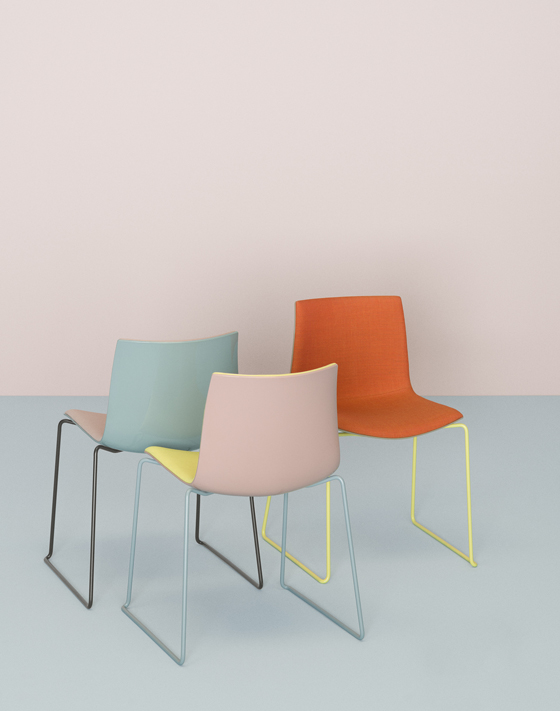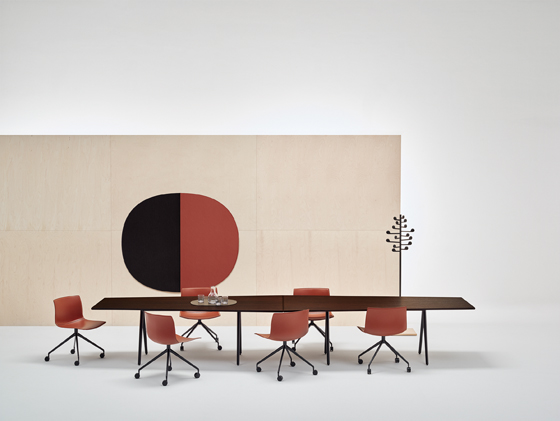Love You Long Time
Storia del Marchio di Clare Dowdy
Monastier di Treviso, Italia
25.05.16
With its proven track record of developing products that attest to an impeccable consideration of technology, materials, function and longevity, it's no surprise that ARPER's designs have a habit of becoming instant classics.
The Catifa 46, with some of the new soft, yet sophisticated, colours for 2016 by Lievore Altherr Molina. The selection is further amplified by coloured base options. Photos: Dominik Tarabanski (1), Marco Covi (2)
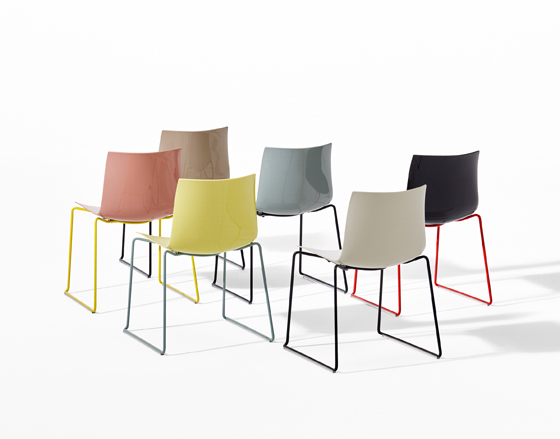
The Catifa 46, with some of the new soft, yet sophisticated, colours for 2016 by Lievore Altherr Molina. The selection is further amplified by coloured base options. Photos: Dominik Tarabanski (1), Marco Covi (2)
×In less than three decades since it was founded in 1989, the Monastier di Treviso company has made its mark on the office, home and contract furniture sectors, across Europe and beyond. Arper’s success can be put down to its inspired marrying of technology, materials, function and design. Attending these qualities are strong sustainable credentials in all its production. Moreover, the brand’s approach manifests itself in a style whose timelessness and understated elegance mean its furniture works well in myriad environments.
Arper is known for its collaborations with some of the world’s most impressive design talent, including Fattorini+Rizzini+Partners, Jean-Marie Massaud, Simon Pengelly and Ichiro Iwasaki. But it is its long-term collaboration with the Barcelona-based designers Lievore Altherr Molina that has been particularly fruitful.
The new palette for the Catifa 46 includes rosé, petrol, yellow, ivory and smoke. The refreshed colours can be paired or contrasted with a customisable seat pad, or interpreted as a monochrome statement. Photos: Marco Covi
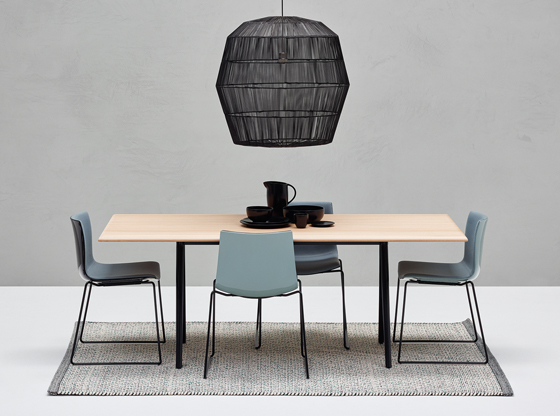
The new palette for the Catifa 46 includes rosé, petrol, yellow, ivory and smoke. The refreshed colours can be paired or contrasted with a customisable seat pad, or interpreted as a monochrome statement. Photos: Marco Covi
×The studio, which was set up in 1991, has worked with Arper since 1999. Co-founders Alberto Lievore, Jeannette Altherr and Manel Molina have created a number of key lines for the company, including Colina, Duna 02, Kinesit, Ply tables and stools, Loop sofa, Parentesit acoustic wall panels and Catifa chairs. This range of chairs has made a significant impact on the market, so much so that a variety of editions have been launched.
Catifa was originally designed in 2000 for the contract sector and large spaces. It started life as a simple idea: the creation of an undulating form to support the user’s body. “Catifa looks a little like a carpet caught in the wind, beginning to curl and take flight,” says Alberto Lievore at Lievore Altherr Molina. In fact, the comparison is literal – in Catalan, ‘catifa’ means carpet. The designers see it as a synthesis of maximum generosity and minimum gesture. “It allows comfort and freedom at the same time.”
Catifa 53 New Edition by Lievore Altherr Molina reimagined for 2016 with a matte plastic or leather finish. Photo: Marco Covi

Catifa 53 New Edition by Lievore Altherr Molina reimagined for 2016 with a matte plastic or leather finish. Photo: Marco Covi
×The Studio Lievore Altherr Molina designers describe the context that brought about Catifa’s conception. “In a landscape dominated by strong, autocratic gestures, a more lightweight, pure minimalism emerged. Computers became curved silhouettes, architecture too became lighter, more sensual. We found parallels in the simplicity of Japanese tableware and the humanity of Scandinavian design classics – a synthesis of essential shapes, basic purpose and rich, natural materials,” says Jeannette Altherr.
The modularity of the Catifa system, the variations in seat width, and the possibility of interpretation set it apart. In addition, Catifa’s defining silhouette was also a barrier against copies that corroded the market. In a landscape of plastic chairs, there was no other proposal like Catifa at that time. The original product, Catifa 53, was followed four years later by Catifa 46. Boasting the same sleek profile, Arper thinks of it as Catifa 53’s little sister. It is aimed at smaller contract market spaces.
Catifa 53's new finishes can be further intensified by a loose seat cushion compatible with all models. Photo: Dominik Tarabanski
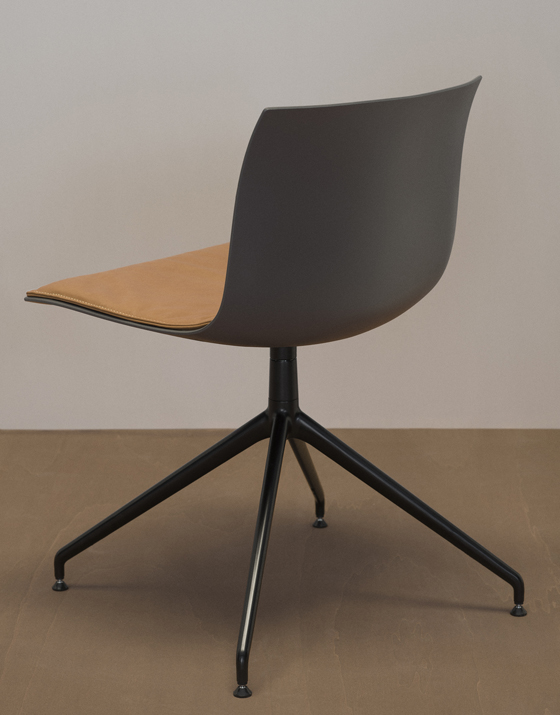
Catifa 53's new finishes can be further intensified by a loose seat cushion compatible with all models. Photo: Dominik Tarabanski
×Meanwhile, Catifa Sensit, which was designed in 2014, may have the comfort of a traditional task chair but lacks the bulk of visible technology. “An integrated mechanism in the back of the chair synchronises movement, allowing it to seamlessly incline, relieving pressure on the lower back and offering full ergonomic support,” says Claudio Feltrin, Vice-President and CEO at Arper. That elegant silhouette means it suits both office and home-working environments. Lastly, with its supportive frame for working in the office or at home, Sensit is available in a chair or lounge version. It has three backrest heights (86cm, 112cm and 127cm); while its armrests are optional and can be upholstered or in aluminium.
In the last 17 years, Arper and Lievore Altherr Molina have developed Catifa to comprise six collections with variations in finish and form. This year, Arper has further expanded the options for 46 and 53 with new colours and finishes, chosen through the company’s thorough research process. These additions have an emotional as well as a functional role to play: “Colour stimulates beyond sensory perception. It evokes emotion. Colour is everywhere – in nature, in the material world. Exquisite attention to colour shapes how we feel at a given moment, in a given space, which is why it is so central to our design thinking. Tranquil or exhilarated, serious or playful, bold or gentle.”
Catifa 46's slim profile makes it suitable for small spaces (top); Parentesit offers comfort for contemporary shared spaces (middle); the freestanding version creates a space for concentration (above). Photos: Marco Covi (1&3), Eugeni Pons (2)
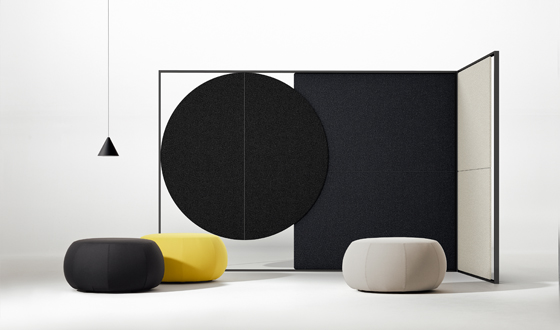
Catifa 46's slim profile makes it suitable for small spaces (top); Parentesit offers comfort for contemporary shared spaces (middle); the freestanding version creates a space for concentration (above). Photos: Marco Covi (1&3), Eugeni Pons (2)
×While the two chairs are still highly appropriate for both the contract market and domestic use, the latest range of colours highlights the interpretation of the chairs. So while Catifa 46, with its fresh and informal appearance, is more for contract use, Catifa 53 is more mature and elegant, and suitable for the home.
Catifa 53 now comes in a matte plastic or leather finish, “lending sophistication and modern character to the quintessential form,” says Claudio Feltrin. The designers have reimagined it as a refined and sensual silhouette, and added warmth to the piece in its new materiality. Shades of white, ivory, gold, sand, caramel, café, anthracite or black lend natural elegance to matte plastic. Meanwhile, the leather version is natural tan. The optional cushion comes in a variety of fabric finishes.
And from this year, Catifa 46’s palette includes rosé, petrol, yellow, ivory and smoke. Any combination of these refreshed colours can be paired or contrasted with a customisable seat pad, or interpreted as a monochrome statement. Selections can be further amplified or muted by fabric texture, shell finish and coloured base options.
Parentesit: the bold, graphic forms are available in three shapes – a circle, a square or an oval (above); these geometric forms can stand alone or be paired together for greater impact (above). Photos: Marco Covi
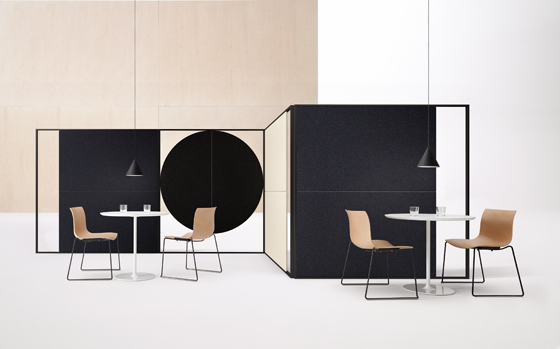
Parentesit: the bold, graphic forms are available in three shapes – a circle, a square or an oval (above); these geometric forms can stand alone or be paired together for greater impact (above). Photos: Marco Covi
×To complement their seating, Lievore Altherr Molina have also updated Parentsit, a wall-mounted screen system which launched last year and was inspired by minimalist art and classic Japanese interiors. Parentsit has now been updated as a free-standing panel, architectural in scale, which can form a three-dimensional space of tranquility in a busy workplace.
The team at Lievore Altherr Molina are rightfully proud of Catifa’s longevity and adaptability. “Over time, it has become more than its initial proposal,” they say. “It has become an archetype.”
© Architonic

